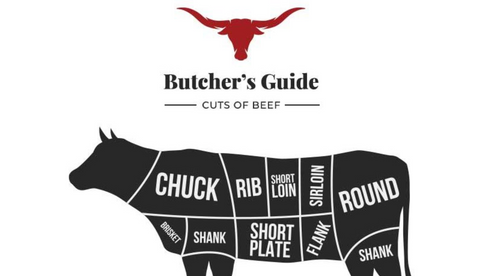Who can resist the mouth-watering allure of a juicy steak? But hey, have you ever pondered the fascinating journey of your beloved beef cut? Mastering the art of steak grilling is like embarking on a flavorful adventure. It all kicks off with knowing your cuts and ends with some epic grill action on a top-notch steak grill.
Dive into the wonderful world of beef cuts, where names can change faster than your local weatherman’s prediction on a spring day – not just from country to country, but even from one butcher to the next! Brace yourselves as we unveil our handpicked lineup of the top 12 contenders in the sizzling steak showdown!
Our curated list of the top 12 beef cuts and where they come from!
Skirt Steak
The outer and inner skirt steaks are both sourced from the diaphragm of the beef. While neither is known for tenderness, they boast rich and delectable flavours. Among the two, the outer skirt steak offers a slightly more tender texture and a significantly more pronounced taste profile.
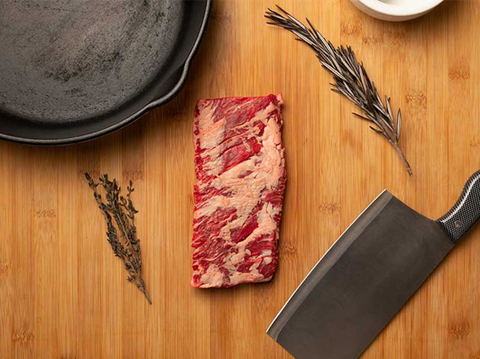
Ribeye Steak
Hailing from the front rib, the ribeye steak is an iconic American cut. It comprises four muscle sections, and its central chunk of fat, often considered its defining feature, lends it its name. However, the moniker is derived from one of the four muscle ligaments, which resembles an eye.
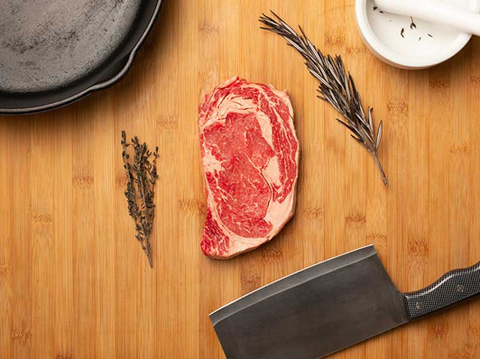
Flat Iron Steak
Named for its distinctive iron-like shape, the flat iron steak is carved from the front shoulder. Typically, the prominent sinew strip is removed, and the meat is often divided into two fillets.

Tomahawk Steak
The tomahawk steak is a classic favorite, renowned for its marbling, juiciness, and robust flavor, thanks to its intact rib bone. Cut from the front rib of the beef, the thickness of the steak depends on the bone’s dimensions. A single tomahawk steak is usually substantial enough to satisfy at least two diners.
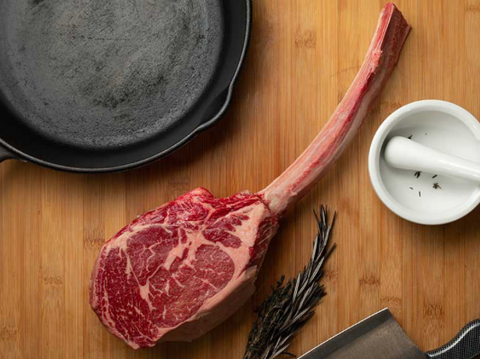
Striploin Steak
The striploin steak, also known as the New York strip steak or simply the strip steak, comes from the loin primal cut of beef. It is a tender and flavorful cut of meat located in the short loin and sirloin sections of the cow. Specifically, it is cut from the longissimus dorsi muscle, which runs along the spine and does minimal work, making it relatively tender.
The striploin steak is typically boneless, although you can sometimes find bone-in versions. It is well-marbled, which means it has intramuscular fat that enhances its flavor and tenderness. This cut is known for its tenderness, rich beefy flavor, and moderate fat content, making it a popular choice for grilling, pan-searing, or broiling.
When you’re at a restaurant or butcher shop, you may see it labeled as New York strip steak, Kansas City strip steak, or simply strip steak, depending on regional preferences and butchery practices.
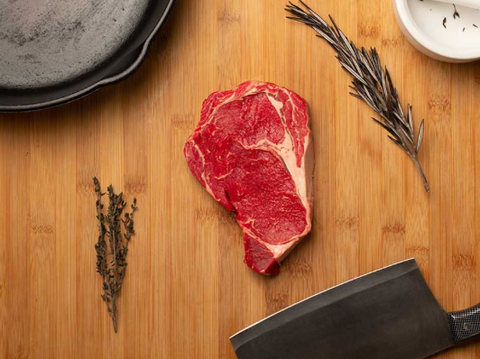
Filet Mignon
Filet mignon stands as one of the most sought-after and expensive cuts due to its exceptional tenderness. It is sourced from the elongated, cylindrical muscle known as the tenderloin, which runs along the animal’s spine from the mid-body to the hind leg. As one moves towards the front of the animal, the filet mignon becomes thinner, resulting in a smaller portion in the T-bone cut compared to the porterhouse. Filet mignon boasts minimal fat and marbling, resulting in a milder flavor profile. It is also used for carpaccio. The thickest portion of the tenderloin, located at the very back of the beef, is cut into Chateaubriand steaks, typically around 8 cm thick, and is classically served for two with béarnaise sauce.
Porterhouse Steak
The porterhouse steak shares the same T-shaped bone as the T-bone and is cut from the farthest back of the animal, featuring a larger portion of filet mignon. Many steak enthusiasts consider it the perfect cut, combining a flavorful strip steak and a tender fillet. In Italy, it goes by the name Bistecca alla Fiorentina and grills to perfection on a high-quality 1500°F steak grill.
Flank Steak
Coming from the lower belly of the animal, flank steak is a wide, flat muscle with long fibers and minimal fat, giving it a slightly chewy texture. Despite its chewiness, it’s a beloved choice from the steak lineup. People often marinate it, throw it on the grill, and slice it thinly across the grain for maximum flavor.
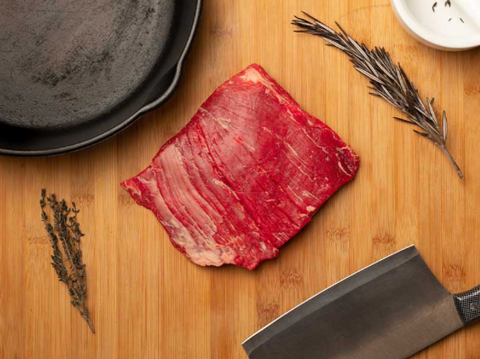
Brisket Beef
Derived from the chest area and separated by a layer of fat, brisket beef requires slow, deliberate cooking due to its lengthy muscle fibers. It shines in dishes like corned beef, pastrami, or when prepared in the Texas-style BBQ tradition.

T-Bone Steak
A true classic, the T-bone steak is characterized by its T-shaped bone, which separates the strip and tenderloin muscles. Sourced from the short loin across the spine, it’s considered a slightly less premium cut compared to the porterhouse, primarily due to its smaller fillet portion. Taste preferences play a significant role in this distinction.

Sirloin Steak
The sirloin steak comes from the hip area of the animal. While it may not be exceptionally tender or flavorful on its own, it is often paired with prawns and served as a Surf n’ Turf dish.
Rump Steak
Rump steak is sourced from the rear part of the hip, the same muscle region as the sirloin. It features excellent marbling and a generous strip of fat, making it exceptionally flavourful and a superb choice for various dishes, particularly in ramen preparations.

